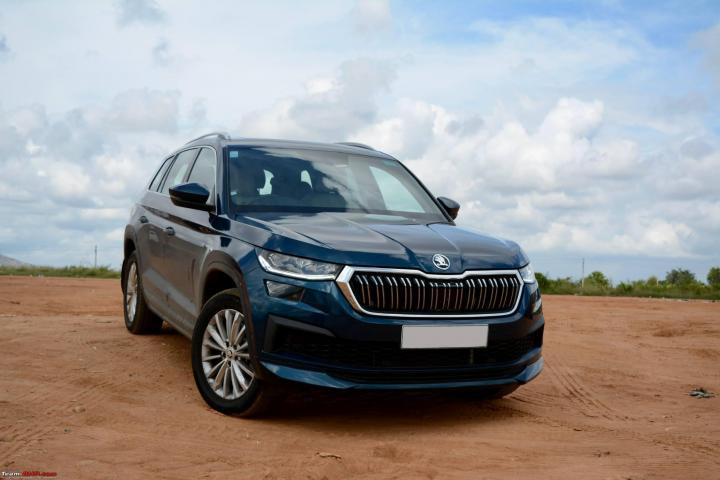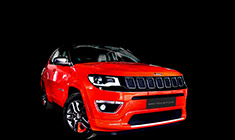News
Deleting features on cars isn't new, but why is it actually happening?
If you delete features because of a genuine problem, then why stuff the car with all those fancy gizmos in the first place?
BHPian CentreOfGravity recently shared this with other enthusiasts.
Car manufacturers deleting features from their cars isn't a new phenomenon. Unfortunately, no matter how pissed off we are by this trend, we aren't going to see an end to it anytime soon. Until 2020, the only excuse OEMs had was "increasing input material costs", but later on they got to play around with two more - Covid-19 and the semiconductor chip shortage. While I agree that the pandemic was a tough time for the manufacturers too and feature deletions at that time were pardonable (IIRC, Mahindra and Skoda deleted some features for a certain time period before adding them back), the truth is that this practice (or should I say malpractice) has been going on for a long time, well before the pandemic struck. Some OEMs strike off features from the brochure under the pretext of "global chip shortage" even today. The truth, as we all know, is that these are cost-cutting measures to increase margins or reduce losses (the former is more likely). Whatever the reasons are – whether valid or invalid – from the customer's standpoint, it is just wrong to remove features whenever they feel like because car prices aren't reducing by the day for the most part.

From what I have understood, there are a couple of cases, so to speak, in a product's lifecycle when features are rejigged. The first and the rarest case is during generational updates and facelifts, wherein a car misses out on features that its previous generation / iteration had. This is not common practice and rightly so, because at a time when the car is in the spotlight, it can immediately make a bad impression. The only car I can remember off the top of my head which took this route was the Hyundai Elite i20, which missed out on a sunroof, LED DRLs, auto wipers, rear disc brakes, etc at launch. On a lighter note, Hyundai set such a high benchmark with the first gen i20 that they couldn't match themselves with the second gen! If you know of any other examples, please do mention them.

Then there is the practice of rejigging variants; i.e, addition and deletion of features in the lower variants. The "deletion" part isn't exactly desirable, but I won't complain much only if the added features make up for the reduced value of the deleted ones. At the end of the day, OEMs have to stay relevant in this dynamic market.
But the actual reason I created this thread was to talk about a far more cruel practice - removing features from a car a few months after its launch. Just search for "features deleted" on Team-BHP and the sheer number of threads will blow your mind. Here are a few I found (these include variant rejigs, feature deletions & additions and cases of feature cuts due to chip shortage):
- Hyundai cuts features on Elite i20
- Scoop! Ford EcoSport gets Touchscreen Head-Unit, but loses other features
- Ford deletes features from the EcoSport Titanium+ variant
- Why is Tata Motors deleting features from its new cars?
- 2022 Skoda Kushaq & VW Taigun lose electric folding mirrors
- Mahindra XUV700: More features deleted due to chip shortage
- Mahindra XUV700 (Features rejigged)
- Mahindra Thar loses a few features; prices remain unchanged
- Rumour: Locking rear differential now optional on Mahindra Thar 4x4
- Mahindra Scorpio-N features deleted despite price hike
- Maruti on feature deletion spree, rear defogger removed from WagonR
Sadly, even luxury manufacturers don't make an exception:
- Volvo India: Removing safety features from its cars!

The car that got me thinking about this topic is the Mahindra XUV300. When the XUV3XO (XUV300 facelift) was launched recently, the industry went gaga over it for its extensive feature list, and I was left wondering, wasn't the XUV300 met with the same response back in 2019? It was laden with segment-first / impressive features like 17-inch alloys, all-wheel disc brakes, front parking sensors, heated ORVMs, dual-zone climate control, steering wheel modes, 7 airbags, three-point seatbelts, 3 adjustable rear headrests, and so on. This was an impressive car and I assumed that the Venue would be in serious trouble. However, Mahindra started deleting features just two years after its launch:
- Mahindra raises XUV300 prices and deletes features!
- Scoop: Mahindra silently removes driver knee airbag from XUV300 W8(O)
- Mahindra XUV300 : Official Review (rear fog lamps and door ajar lamps deleted)
- Front parking sensors, fancy key deleted
- XUV300 alloy wheels downsized
In the end, most of the defining features of the XUV300 disappeared. Because of these constant features cuts, people started looking down upon the little XUV, for it's biggest strength changed into its biggest weakness. All this while sales didn't see a major drop. It continued to sell an average of ~4000 units a month. Mahindra didn't lose anything in sales terms, but this meant that they could get the XUV3XO hyped better. And 'hype' it got - get this, the XUV3XO got 50,000 bookings in 60 minutes! Compare the 3XO to the outgoing 300, and then compare it to the first iteration of the 300. In which case does the 3XO seem like a better upgrade? See the difference in both cases?

Come to think of it, this is straight up EVIL and simply not acceptable. These guys have a wicked strategy - when they introduce a new model / facelift, first they wow the audience with a cracking price. Once the dust settles and the spotlight moves away from them, they silently delete features, and that too on multiple occasions. Only to wow the audience again at the next update, where they've added all the deleted features again and then some more. Take a bow, OEMs. Now stay there, I want to beat you up with my elbow .
To car makers: If you delete features because of a genuine problem, then why stuff the car with all those fancy gizmos in the first place? Why do you bite off more than you can chew? Why use these features as a bait for potential buyers, only to remove them when these people actually turn up to buy the car? Give us meaningful features that you're sure to keep till the end of the car's life cycle, instead of plonking in every feature on the planet just to make an impression and we'll be a happy lot.
I am sorry for sounding a bit harsh in conveying my points, but it saddens me when brands betray us this way. I know that my thoughts may not align with everyone, but hey, ain't that the reason Team-BHP is a "discussion" forum
BHPians, what are your thoughts on this matter?
Here's what BHPian Sk8r had to say on the matter:
Am not surprised by this and this happens due to a couple of scenarios:
- Pressure to maintain profit margins amidst raising the "cost" of the product. Can draw parallels to "shrinkflation" seen in FMCG goods. A packet of lays has been INR 10 for a very long time, but the weight hasn't remained the same
- For listed companies, there is even more pressure to not just maintain but keep increasing the profit margin. This becomes a challenge when there is no organic increase in the top end. Now, they've no better way to achieve it than reducing the cost. Can draw parallels to FAANG like companies firing people irrespective of huge revenues
Here's what BHPian aravind.anand had to say on the matter:
Automotive OEMs frequently conduct cost workshops to benchmark and remove features that are not present in their competitors. Changes that are not simple, would be earmarked for implementation during the next face-lift or new model change. This is just an exercise to keep the profit margin healthy.
When I worked for a car manufacturer, the car we made had lovely sounding dual horns, but during a benchmarking exercise, participants pointed out that its arch rivals had punk meek sounding single horns. That was noted as an idea to be implemented, and within 2 months, our car also lost one of the horns and joined the 'meek' gang
Another idea was that the AC compressor in our car was of much bigger volume than what its competitors had. That idea was also noted down, and that went as feedback while developing the next-gen car!
Sadly, common shared parts and feature elimination are how the Automotive industry is running these days.
Update: In a crazy way, the saved amount is multiplied by the volume projection to glorify the cost savings by the team that has organized the cost workshop.
The cost of a horn is INR 80, volume for that model is 1,20,000 a year so the cost savings projection becomes - INR 9.6 million !! INR 80 looks small, but INR 9.6 million looks huge - right?
Not kidding, removing one reverse bulb along with its wiring will save INR 20 at max, but just look at how many manufacturers have applied that logic and saved millions.
Check out BHPian comments for more insights and information.
- Tags:
- Indian
- Member Content
- car features






.jpg)






.jpg)




